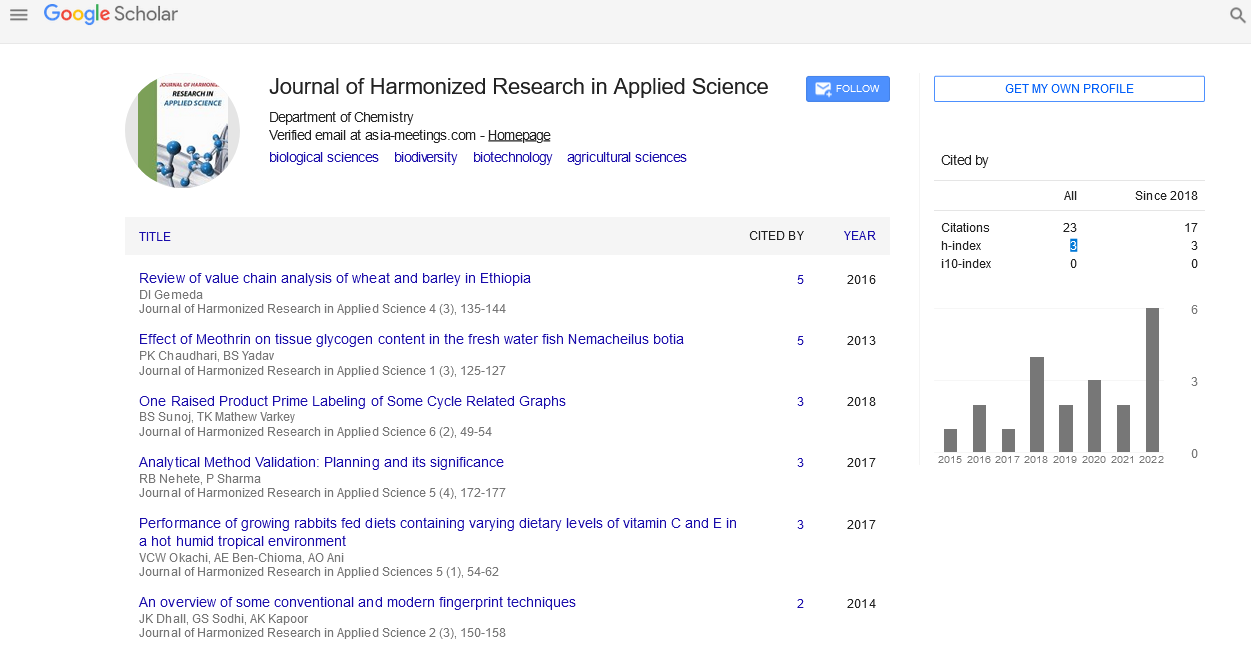Perspective - (2022) Volume 10, Issue 3
Genome editing by using CRISPR-Cas9 system
Maura Iversen*Received: Aug 25, 2022, Manuscript No. JHRAS-22-78055; Editor assigned: Aug 29, 2022, Pre QC No. JHRAS-22-78055(PQ); Reviewed: Sep 12, 2022, QC No. JHRAS-22-78055; Revised: Sep 19, 2022, Manuscript No. JHRAS-22-78055(R); Published: Sep 26, 2022, DOI: 10.30876/2321-7456.22.10.003
Description
Genome editing (also called gene editing) is a set of techniques that allow scientists to change the DNA of living organisms. These techniques allow genetic material to be added, deleted, or altered at specific locations in the genome. Several approaches to genome editing have been developed. One well-known system is called CRISPR-Cas9 (Clustered Regularly Interspaced Short Palindromic Repeats and CRISPR-associated protein 9), which stands for clustered regularly spaced short palindromic sequences and CRISPR-associated protein 9. The CRISPR-Cas9 system has received a lot of attention in the scientific community because it is fast, cheap. CRISPR-Cas9 system is more accurate and efficient than other genome editing methods. CRISPR-Cas9 technique was adapted from a naturally occurring genome-editing system that bacteria use as an immune defense. When infected with a virus, the bacterium captures small pieces of viral DNA and inserts them into its own DNA in specific patterns, creating segments known as CRISPR arrays. CRISPR arrays allow bacteria to identify viruses (or closely related viruses). When the virus attacks again, bacteria from the CRISPR array produce segments of RNA that recognize and bind to specific regions of viral DNA. The bacterium then uses Cas9 or similar enzyme to cleave the DNA and inactivate the virus. Researchers adapted this immune defense system to edit DNA. They create a small piece of RNA with a short guide sequence that attaches (binds) to a specific target sequence in a cell’s DNA, much like the RNA segments bacteria produce from the CRISPR array. This guide RNA also attaches to the Cas9 enzyme. When introduced into cells, the guide RNA recognizes the intended DNA sequence, and the Cas9 enzyme cuts the DNA at the targeted location, same like the process involved in bacteria. Although Cas9 is the enzyme that is used most often, other enzymes (for example Cpf1) can also be used. Once the DNA is cut, researchers use the cell’s own DNA repair machinery to add or delete pieces of genetic material or to make changes to the DNA by replacing an existing segment with a customized DNA sequence. Targeted nucleases are powerful tools for mediating genomic alterations with high precision. The RNA-Driven Adaptive Immune System Cas9 nuclease uses microbial Clustered Regularly Interspaced Short Palindromic Repeats (CRISPR) to simply include a 20 nucleotide targeting sequence into eukaryotic RNA. This can facilitate efficient genome manipulation in eukaryotic cells.
To minimize off-target cleavage, they use double-nicking strategy by Cas9-mutated nickase enzyme and a paired guide RNA. Starting with target design, genetic modification can be achieved within just 1-2 weeks and engineered clonal cell lines can be derived within 2-3 weeks. Although gene editing requires a protospacer-adjacent motif site in the vicinity of the desired break, this platform is generally viewed as simpler to design and implement. CRISPR guide RNAs can be made at low costs to target nearly any genomic sequence of interest, and expressing multiple CRISPR guide RNAs in cells allows for multiplexing of CRISPR edits. In contrast, transcription activator-like effector nucleases usage is not dependent on the availability of a PAM site and can be used at any location in the genome. Closer proximity of the transcription activator-like effector nucleases to the target insertion site can also lead to improved homology-directed repair. Although transcription activator-like effector nucleases may have more specific and flexible capabilities, it is more time consuming and less cost-effective than CRISPR.










